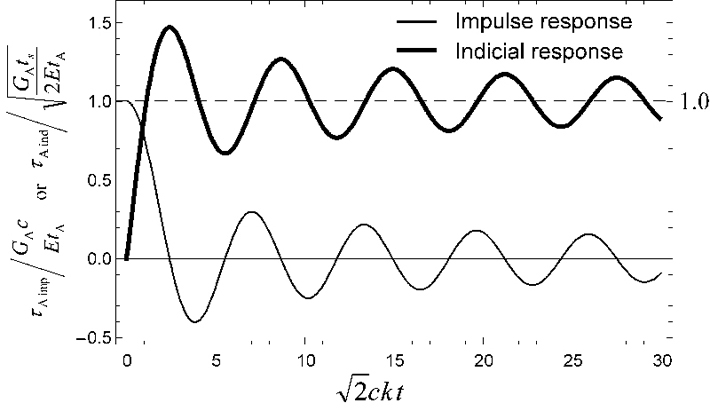The use of adhesively bonded joints has been expanding into many different fields. Their light weight, low cost and load-bearing efficiency lend them to applications in air- and spacecraft, as well as automotives.
However, a method for estimating the strength of adhesively bonded joints is not yet well established. In particular, the impact strength of the joints is still unknown. Impact strength could be very important in situations such as a car crash, where car joints could be subjected to impact loading.
Now, Chiaki Sato at Tokyo Institute of Technology has found a closed form solution of the stress distribution in semi-infinite adhesively bonded lap-strap joints subjected to impact loading. The solution is based on the shear-lag model given by Volkersen.
The Volkersen model for static loading was expanded to a dynamic model, taking into consideration the inertia effects of the adherends included in the objective joint. The extended Volkersen model for dynamic conditions was analytically solved for an impact load applied to the joint.
The solution revealed that the maximum stress in the adhesive layer occurs at the input end of the joint. Expressions were also found for the fluctuation in time of the maximum stress.
These closed-form solutions are not directly applied to actual designs of products such as automotives because they treat a very simple configuration of adhesively bonded joints. On the other hand, the solutions are very important because they can provide clues for more profound theoretical research on the impact phenomena of adhesively bonded joints.
Reference
- Authors: Chiaki Sato.
- Title of original paper: Dynamic stress responses at the edges of adhesive layers in lap strap joints of half-infinite length subjected to impact loads
- Journal, volume, pages and year: International Journal of Adhesion and Adhesives 29, 670-677 (2009).
- Digital Object Identifier (DOI): http://dx.doi.org/10.1016/j.ijadhadh.2009.02.005
- Affiliations: Precision and Intelligence Laboratory, Tokyo Institute of Technology
- Department website: http://www.pi.titech.ac.jp/


A 60 GHz CMOS direct-conversion transceiver (4 mm × 4 mm)
. Any information published on this site will be valid in relation to Science Tokyo.



